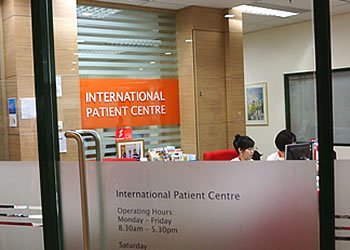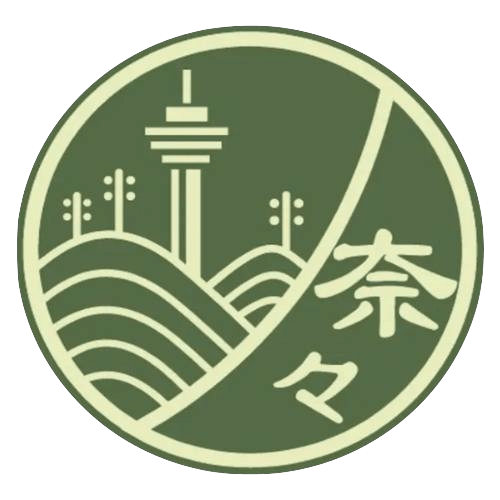Inquiries/Reservations
- Inquiry/Reservation
- Long Stay Consultation
- Private Lodging Reservation
- (Homestay) Experience
Real Estate Information
Post-Completion Service
Why is KL Real Estate so Popular?
Malaysia Best for Investment
Malaysia Best Place to Live
Useful Information About Purchasing
Property Maintenance
Free yourself from real estate related worries!
With one phone call, TOMO-chan will be there for you!
Now Accepting Inquiries!!
We are always waiting for you.
- Home
- High Medical Standard with 1/3 of Normal Price
High Medical Standard with 1/3 of Normal Price
- Price level is about 1/3 of Japan
One of the reasons why Malaysia is gaining popularity is becauseWhile it is a country that boasts a high standard of living even among Southeast Asian countries, the price level is much lower than that of Japan.The point is. There are some variations, such as some items are not much different from those in Japan, but overall, the price level is said to be about 1/3 that of Japan. In addition, the cost of living such as housing and transportation costs is remarkably low, and there is no resident tax.
Mercer, a U.S. human resources consulting firm, surveyed 209 major cities around the world.In the 2021 global cost of living ranking (comparing the cost of living for expatriates, the higher the cost of living, the higher the cost of living), Tokyo, Japan ranks 4th, and Kuala Lumpur, Malaysia ranks 152nd.There was a big difference. Kuala Lumpur ranks Bangkok, Thailand (46th), Manila, Philippines (78th), Yangon, Myanmar (104th), Jakarta, Indonesia (104th), Phnom Penh, Cambodia (125th), Ho Chi Minh City, Vietnam (143rd). ), the cost of living is lower than in other Southeast Asian countries.
Mercer, a U.S. human resources consulting firm, surveyed 209 major cities around the world.In the 2021 global cost of living ranking (comparing the cost of living for expatriates, the higher the cost of living, the higher the cost of living), Tokyo, Japan ranks 4th, and Kuala Lumpur, Malaysia ranks 152nd.There was a big difference. Kuala Lumpur ranks Bangkok, Thailand (46th), Manila, Philippines (78th), Yangon, Myanmar (104th), Jakarta, Indonesia (104th), Phnom Penh, Cambodia (125th), Ho Chi Minh City, Vietnam (143rd). ), the cost of living is lower than in other Southeast Asian countries.
- One of the world's most pro-Japanese nations, with a calm and friendly national character
Mr. Mahathir, who served as prime minister for 22 years from 1981 (returned to prime minister temporarily in 2018) and is also known as a Japanophile, advocated the "Look East Policy" and has long advocated the people of Japan and other countries in the East as a model. and the development of domestic infrastructure through official development assistance (ODA) from Japan.Malaysia is one of the world's most pro-Japanese nationsis. Because of their calm and friendly national character, they are sure to welcome Japanese people warmly.
- Many Japanese-speaking hospitals and high medical standards
Malaysia has many doctors who have obtained medical licenses or doctoral degrees from universities in Europe and the United States, and large private hospitals are equipped with the latest medical equipment.Medical standards are comparable to developed countriesdoing. Many people visit Malaysia on "medical tours" because they can enjoy high-level medical care at a lower price than in developed countries. In addition, it is reassuring for Japanese people that there are several hospitals in places such as Kuala Lumpur that have Japanese-speaking doctors, Japanese nurses, and Japanese interpreters.


- One of the safest places in Southeast Asia
Malaysia has a low poverty rate, nearly full employment, and relatively stable politics. In addition, the penalties for illegal possession of drugs and guns are severe, and the government is working hard to stabilize public order in order to attract foreign tourists.
In fact, the ranking was based on internal conflicts, public security, military strength, etc. announced by the Institute for Economics and Peace (IEP), an international think tank.Malaysia ranks 23rd in the world in the Global Peace Index (2021 edition, 163 countries/regions covered)In the major Asian countries, Singapore (11th) and Japan (12th) are evaluated.
In fact, the ranking was based on internal conflicts, public security, military strength, etc. announced by the Institute for Economics and Peace (IEP), an international think tank.Malaysia ranks 23rd in the world in the Global Peace Index (2021 edition, 163 countries/regions covered)In the major Asian countries, Singapore (11th) and Japan (12th) are evaluated.


- Kuala Lumpur, one of the leading modern cities in Southeast Asia, has well-developed life infrastructure
Malaysia isA country in Southeast Asia that has advanced transportation and life infrastructure development next to SingaporeIn urban areas, the water supply penetration rate is almost 100%, and the road network, railway network, and air network are also extensively developed in the country. Among them, Kuala Lumpur, the capital city, is a modern city with a splendid fusion of a metropolis of skyscrapers and lush greenery. It is fulfilling.
In addition, the smartphone penetration rate is almost 100%, and the household Internet penetration rate is also at a high level of about 90%. Compared to Japan, where fiber-optic lines are widespread, the speed is slow, but compared to many other Southeast Asian countries, the internet infrastructure is remarkably well-developed, and free Wi-Fi is available everywhere in the city.
In addition, the smartphone penetration rate is almost 100%, and the household Internet penetration rate is also at a high level of about 90%. Compared to Japan, where fiber-optic lines are widespread, the speed is slow, but compared to many other Southeast Asian countries, the internet infrastructure is remarkably well-developed, and free Wi-Fi is available everywhere in the city.
- There are many Japanese supermarkets such as Aeon and Isetan, and there is a wide selection of Japanese ingredients.
Aeon, Isetan, etc. in Kuala LumpurJapanese supermarkets have expanded into the area, offering a wide range of Japanese ingredients such as soy sauce and tofu.In addition, there are many Japanese restaurants. Also, one of the attractions of Kuala Lumpur is that you can easily get the same everyday items as in Japan, such as buying Japanese books at Kinokuniya, and shopping at Uniqlo and Daiso.


- An everlasting summer climate, comfortable enough to spend all year round with only summer clothes
Malaysia is located directly under the equator between 1 and 7 degrees north latitude and belongs to a tropical climate."It's easier than summer in Japan"The voice is also heard. Because it is a country of perpetual summer, you can spend a whole year just wearing summer clothes. The annual rainfall is 2,000 to 2,500 mm, with a rainy season and a dry season. Although squalls can be seen throughout the year, it does not rain all day long, and the temperature drops after the rain, making it easier to spend time.
Temperature and precipitation in Kuala Lumpur
Temperature and precipitation in Kuala Lumpur
| January | February | March | April | May | June | July | August | September | October | November | December | |
| Average maximum temperature (°C) | 32.1 | 32.9 | 33.2 | 33.1 | 32.9 | 32.7 | 32.3 | 32.3 | 32.1 | 32.1 | 31.6 | 31.5 |
| Average minimum temperature (°C) | 22.5 | 22.8 | 23.2 | 23.7 | 23.9 | 23.6 | 23.2 | 23.1 | 23.2 | 23.2 | 23.2 | 22.9 |
| Average precipitation (mm) | 170 | 165 | 241 | 259 | 204 | 125 | 127 | 156 | 193 | 253 | 288 | 246 |
| Average number of rainy days (days) | 11 | 12 | 14 | 16 | 13 | 9 | Ten | 11 | 13 | 16 | 18 | 15 |
| January | February | March | April | |
| Average maximum temperature (°C) | 32.1 | 32.9 | 33.2 | 33.1 |
| Average minimum temperature (°C) | 22.5 | 22.8 | 23.2 | 23.7 |
| Average precipitation (mm) | 170 | 165 | 241 | 259 |
| Average number of rainy days (days) | 11 | 12 | 14 | 16 |
| May | June | July | August | |
| Average maximum temperature (°C) | 32.9 | 32.7 | 32.3 | 32.3 |
| Average minimum temperature (°C) | 23.9 | 23.6 | 23.2 | 23.1 |
| Average precipitation (mm) | 204 | 125 | 127 | 156 |
| Average number of rainy days (days) | 13 | 9 | Ten | 11 |
| September | October | November | December | |
| Average maximum temperature (°C) | 32.1 | 32.1 | 31.6 | 31.5 |
| Average minimum temperature (°C) | 23.2 | 23.2 | 23.2 | 22.9 |
| Average precipitation (mm) | 193 | 253 | 288 | 246 |
| Average number of rainy days (days) | 13 | 16 | 18 | 15 |
Source: World Meteorological Organization
TOMO's real estate support in Malaysia | Latest real estate information | Latest rental property information | Purchase procedure/flow | Costs related to real estate transactions | Malaysian property ownership | TOMO's property management service









